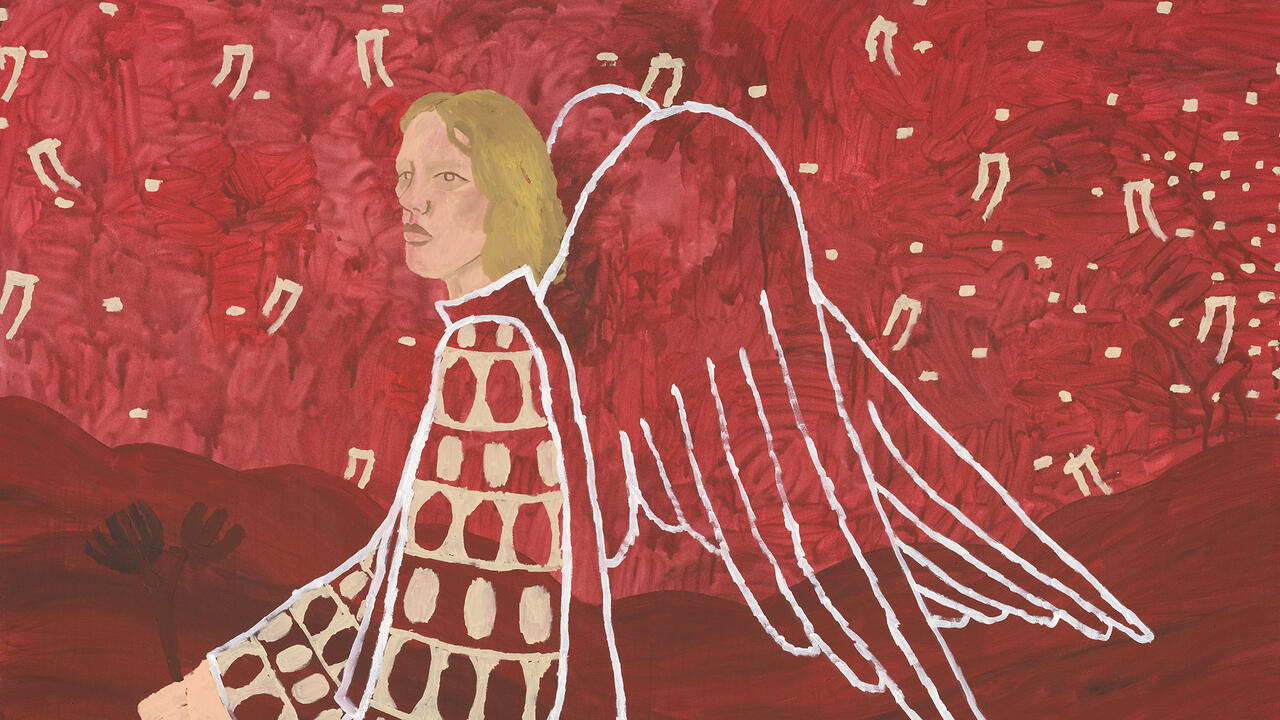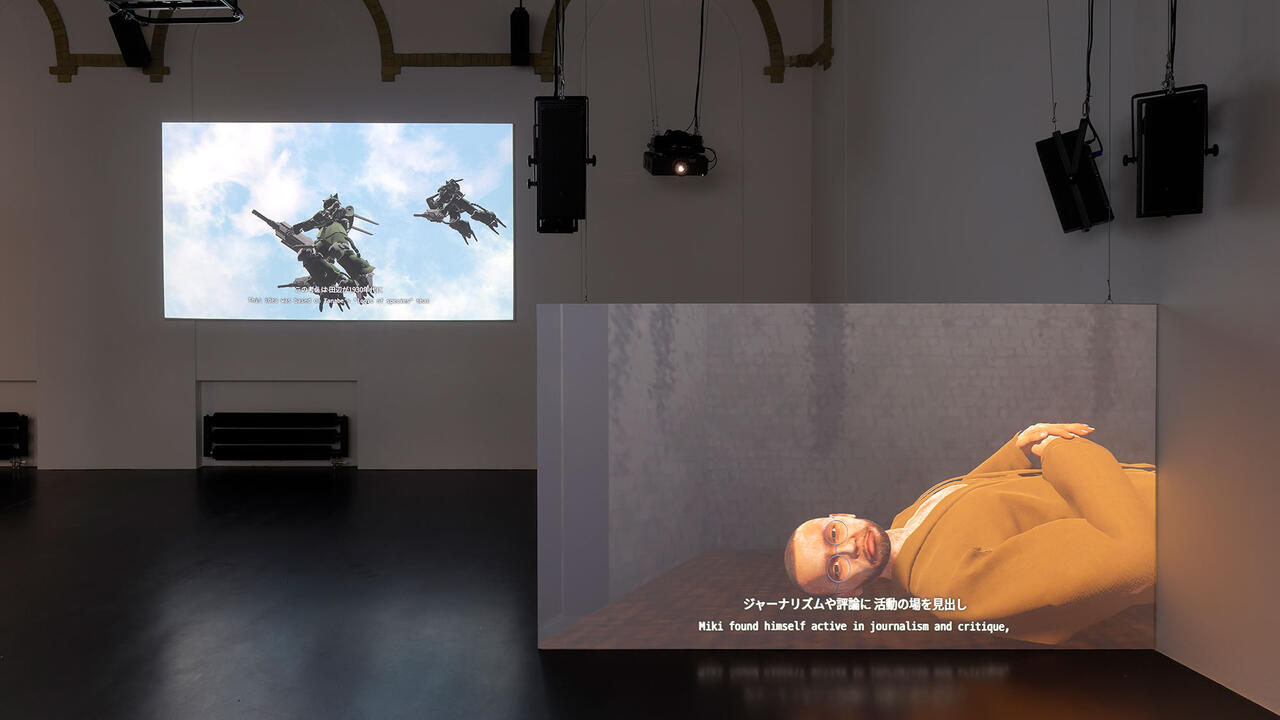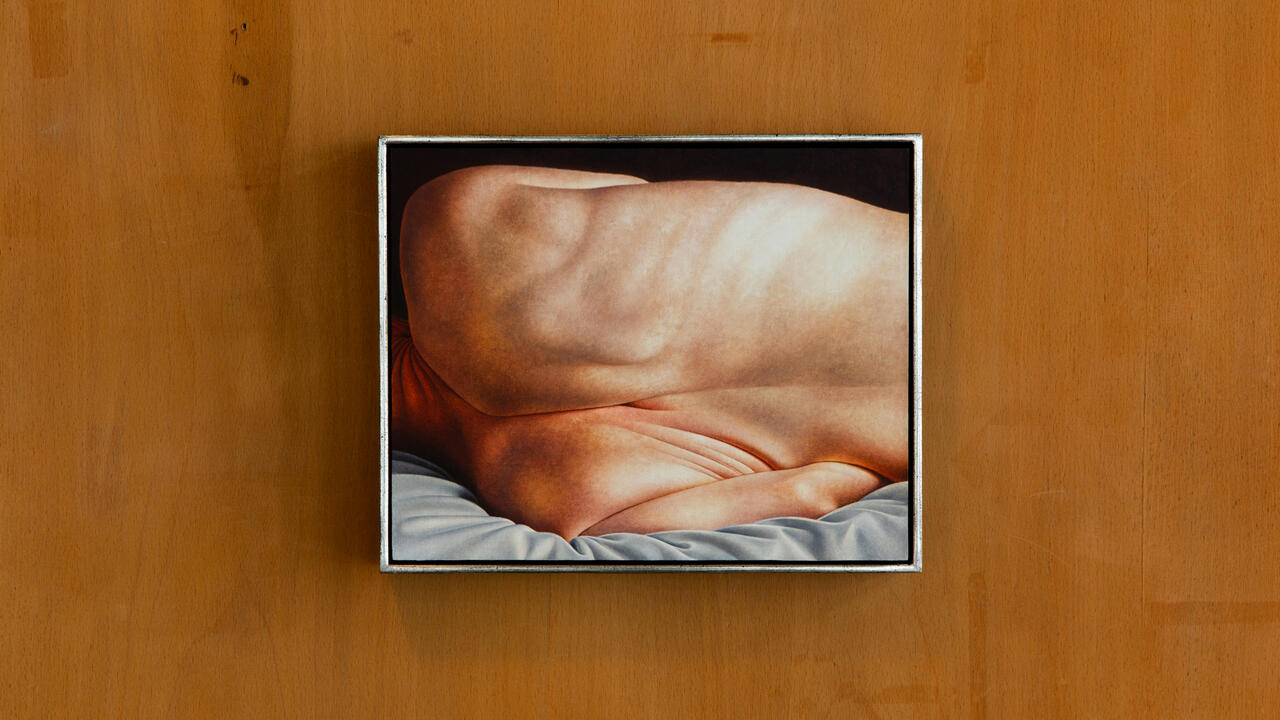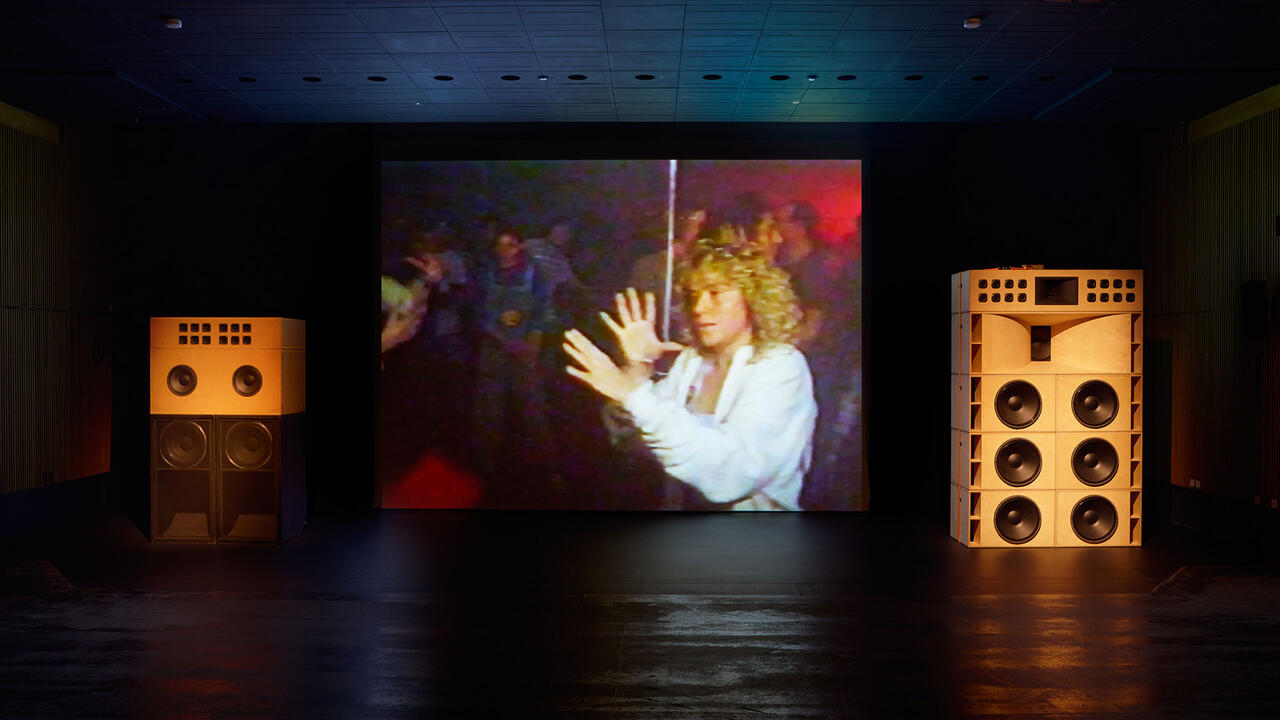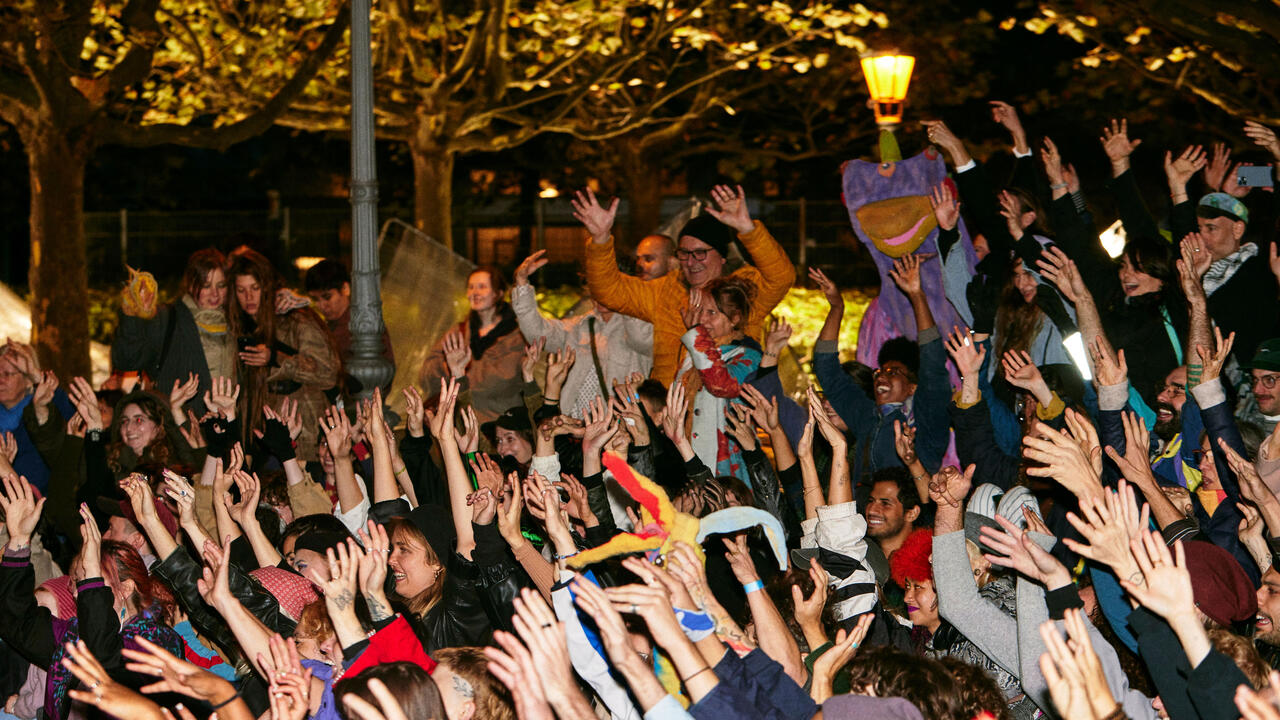Bettina Allamoda
September, Berlin, Germany
September, Berlin, Germany
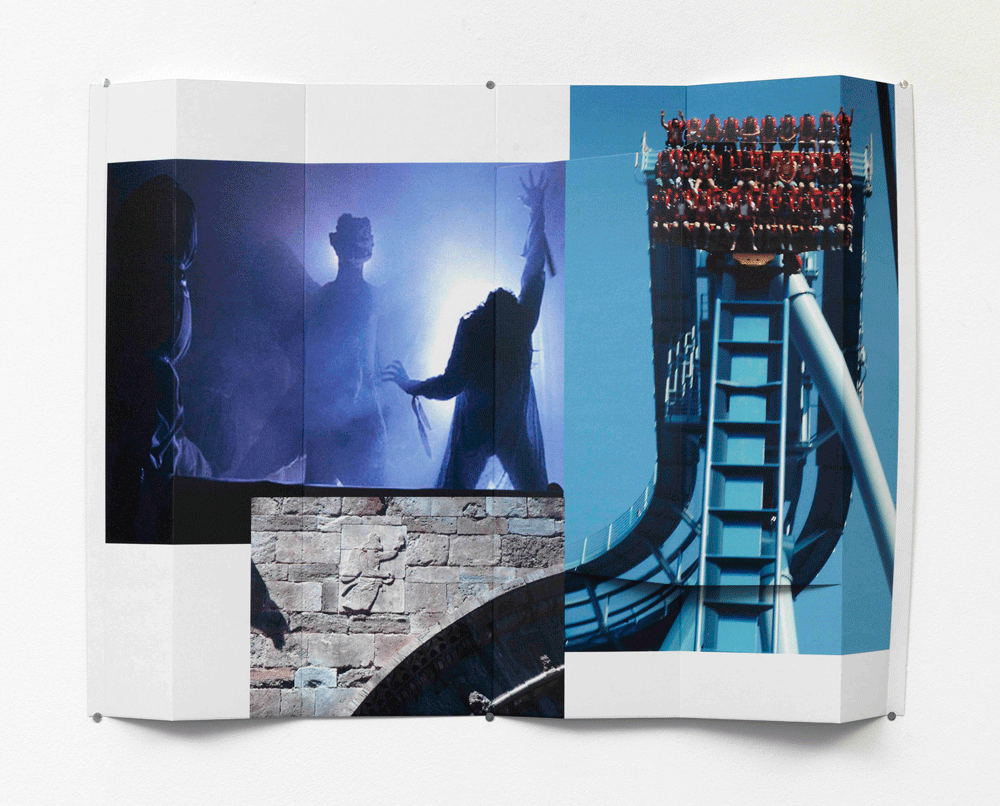
In 2004, while watching William Friedkin’s The Exorcist (1973), a US Army captain realized that the opening sequence – in which a small stone head is excavated and an evil demon named Pazuzu is set free – was filmed at the ancient ruins of Hatra, Iraq, where he was on duty. He had the idea of turning the site into an Exorcist Theme Park. Though the project never got off the ground, Bettina Allamoda treated this bit of news like an excavated demon head itself: a small item with large resonances in the connections between war and entertainment, fantasies of control and being controlled.
Rather than didactically illustrating these connections, Allamoda formalized them into a sensory, spatial and sculptural experience. Her piece The Exorcist (2009) – a large still from the eponymous film in which the demon-possessed girl levitates above her bed, the heavy Victorian posts padded like Louise Bourgeois fetish pieces – hung across from some of her ‘Bed Bondage Sculptures’ (2009–ongoing), which consist of the kind of metal rods used for bicycle stands clasped with stretchy synthetic fabric. In Bed Bondage sculpture #2 (2009/10), a freestanding rod is kept from falling over by a long piece of salmon-coloured Lycra wrapped around the bar, its two ends fixed to wall and ceiling – a precarious balance as reminiscent of post-Minimalism as of a makeshift repair at a 1990s outdoor rave.
Allamoda’s combination of steel and synthetic fabric recalls both crowd control and staging devices, some examples of which can be seen in her pop-up collages (involving images protruding from the white support). In NYC / Times Square (2010), two boys behold a soldier in an advertisement on a screen above the US Army recruitment centre in Times Square, next to pedestrian barriers around what looks like a PA system, half-covered with blue tarpaulin. In Deathblow/Pazuzu Shrine (2008), the comic-book character Deathblow – an ex-Navy Seal turned steely, muscular war machine – is combined with a comic-version Pazuzu sculpture, and the lines: ‘I was raised a patriot. Trained as a soldier. And became a killer.’
Allamoda’s sculptures and collages make tangible the torsions and inversions (and not just repetitions or appropriations) that the military-entertainment complex produces. She arrived at Bed Bondage Sculpture #3 (2010) by wringing a piece of black synthetic leather around a bar stool and fixing it to the wall so that it sticks out from it. The result looks like a leaping Batman, the physical effect on the material reminiscent of Giovanni Anselmo’s seminal Torsion (1968), which similarly involves leather wrung around a piece of wood, or Steven Parrino’s canvases pulled and contorted around the stretcher. But while Anselmo and Parrino covered their tracks and reduced everything to the physical interaction and its result, Allamoda opens the can of worms. References are crawling everywhere, but the sculptures hold up.









